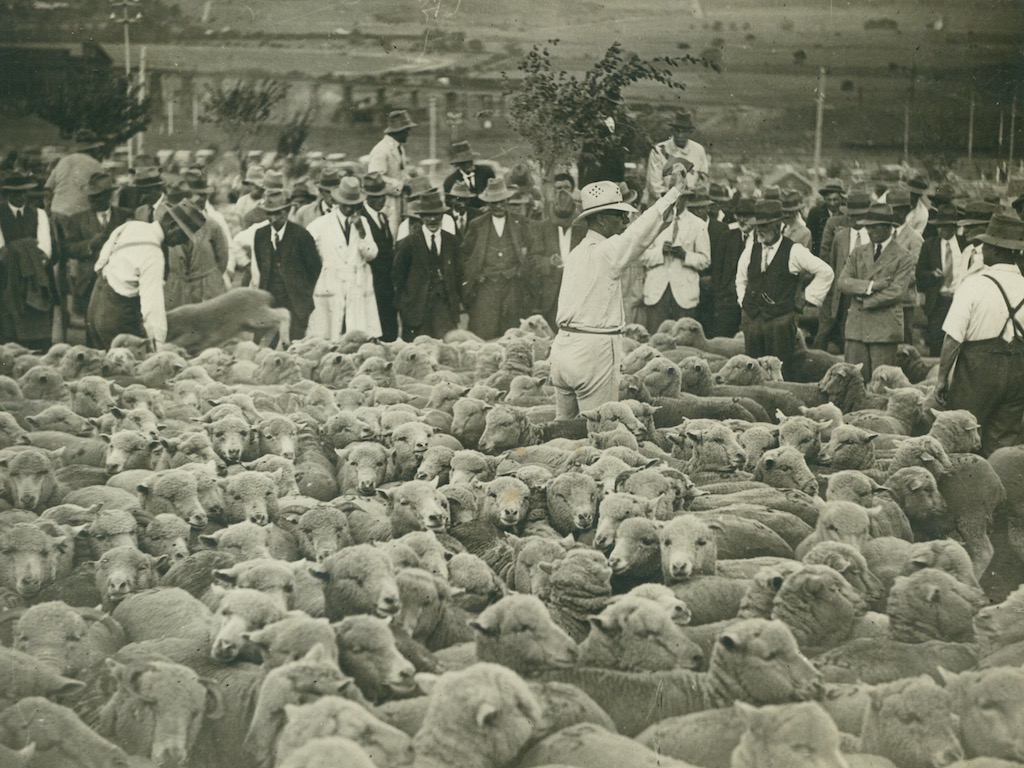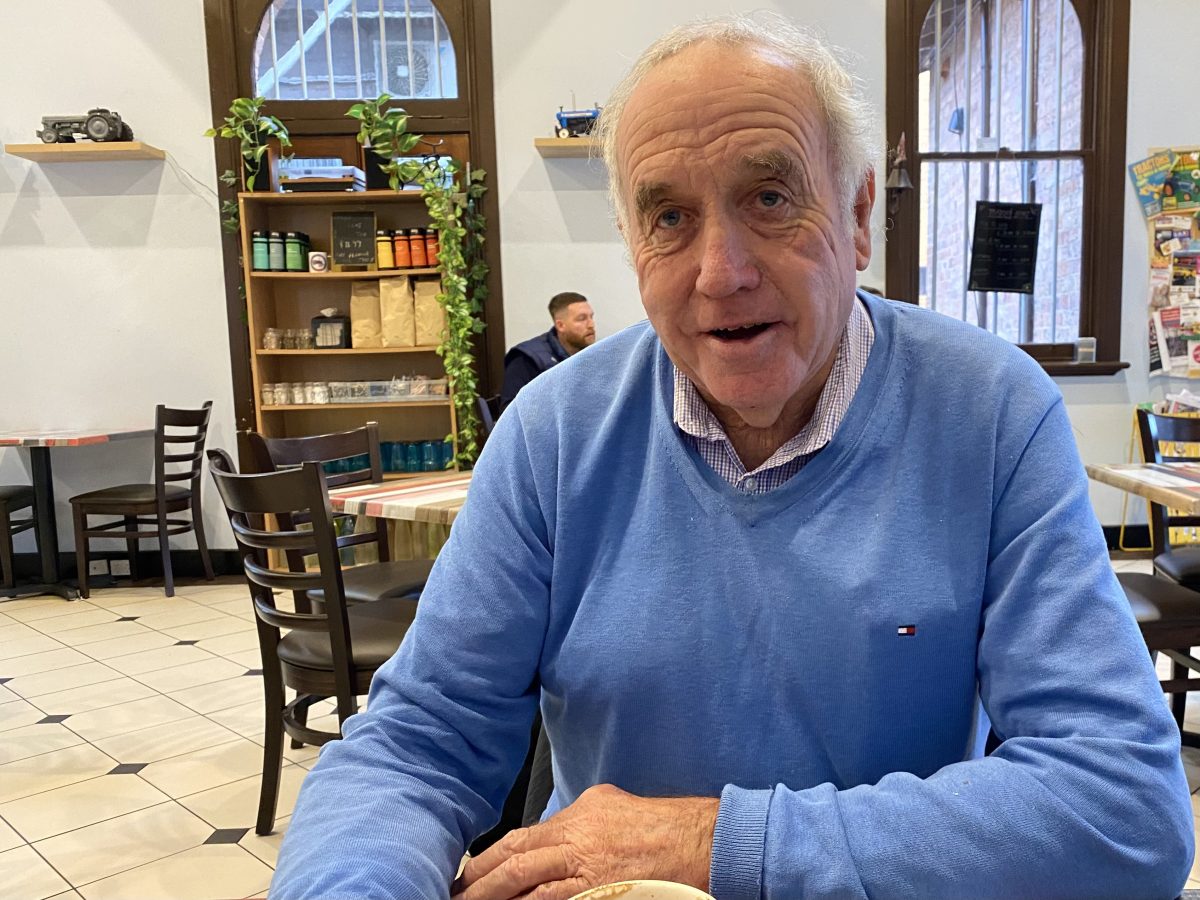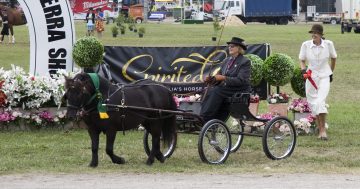
Leslie Wheatley auctioning sheep at the Goulburn saleyards in 1924. Leslie’s father, William Henry Wheatley ran NSW’s biggest livestock firm in Goulburn, which led to massive yardings in the city. Weekly sales in Goulburn are now only a memory. Photo: Goulburn Mulwaree Library.
Almost 60 years since he started as a trainee stockman with Pitt, Son and Badgery, Goulburn man Peter Dew is still selling sheep and cattle on commission.
Despite technology and producers selling their stock directly to processors, he believes saleyards remain the truest indicator of the market.
Peter was learning about stock well before he began training as an agent in 1967. His father Geoff worked for 37 years on one of the great Chisholm family properties, Kippilaw, 10 kilometres west of Goulburn, the last 15 years as manager.
“They used to run about 12,000 Merino sheep and about 400 head of poll shorthorn cattle,” Peter said.
He lived at Kippilaw, loved the lifestyle and working with stock. They rounded up sheep and cattle on horseback, which were later replaced with a LandCruiser and motorbikes. “I used to love driving tractors too. I worked there myself for about three years; I enjoyed it,” he said.
He learned to be an auctioneer from his boss and branch manager Jim Walker. “I watched Tony Dowe, a very good auctioneer and took examples from him,” he said. “You’ve got to know your different classes of stock, your values of stock – that comes with years of experience.
“You have got to know if a certain class of lamb in today’s market might be worth $150, another class might be worth only $120,” Peter said. “Then you have got to learn how to separate stock, draft them into suitable lines – that comes from experience too, really.”
In the late 1960s, Goulburn was yarding 18,000 to 20,000 sheep per week in busy periods. Peter recalls one yarding of 36,000 sheep.
He worked for Farmers and Graziers from 1976 to 1978 and transferred to Yass for four years, then travelled north to Tamworth, then Gunnedah and worked briefly at Glen Innes before returning to Goulburn to spend nine years with Alan Duncombe and Co.
He has experienced producers’ satisfaction with their returns in rising markets and their irritation with less-than-expected prices for their livestock. “People get a bit agitated on a hot day when you have a lot of stock around, the market’s not going too well,” he said.

Now semi-retired, Peter Dew still keeps an eye on cattle and sheep sales. Equally interested in old tractors, Peter remembers his father using shotgun cartridges to start a one-cylinder Field Marshall tractor with rubber tyres, and a one-cylinder Fowler bulldozer, better known as a crawler tractor at Kippilaw. Photo: John Thistleton.
These days he is attending sales at South East Livestock Exchange at Yass, Braidwood and Moss Vale where Wingecarribee Council runs the Southern Region Livestock Exchange.
“It’s hard to put a figure on it – they would bring a lot of money into the town,” he said. “People come in, they might have lunch, the wife goes shopping, the chap might buy a new car.”
Peter stays well clear of commenting on the declining numbers and controversies that eroded the once dominant Goulburn saleyards, and which led to the last yarding in 2017.
Reports of the saleyards slipping into disrepair go back to before the 1950s. Tony Dowe recounts arguments with the then council in the 1970s. “They wouldn’t go to the trouble to put shading or proper water fixtures there,” he said.
As yardings diminished and environmental regulations strengthened, sheep grazier Tony Morrison travelled to local government areas of NSW and Victoria researching rationalising and centralising saleyards.
He was chairman of the Goulburn branch of NSW Farmers at the time, and his committee inspected prospective sites for modernised yards in Goulburn, including one next to the abattoir, but for various reasons each site was rejected.
“You can’t blame Goulburn,” Tony said. “It was uneconomical. In the old days agents would have to draft the sheep and their work was not done after the sale either. Now, saleyards staff do all that work; it is more efficient and therefore cheaper and there’s more competition.
“It’s a numbers game; you have to move on,” he said.
Original Article published by John Thistleton on About Regional.


 It would be great if there could be some research into methods to make…
It would be great if there could be some research into methods to make… 










